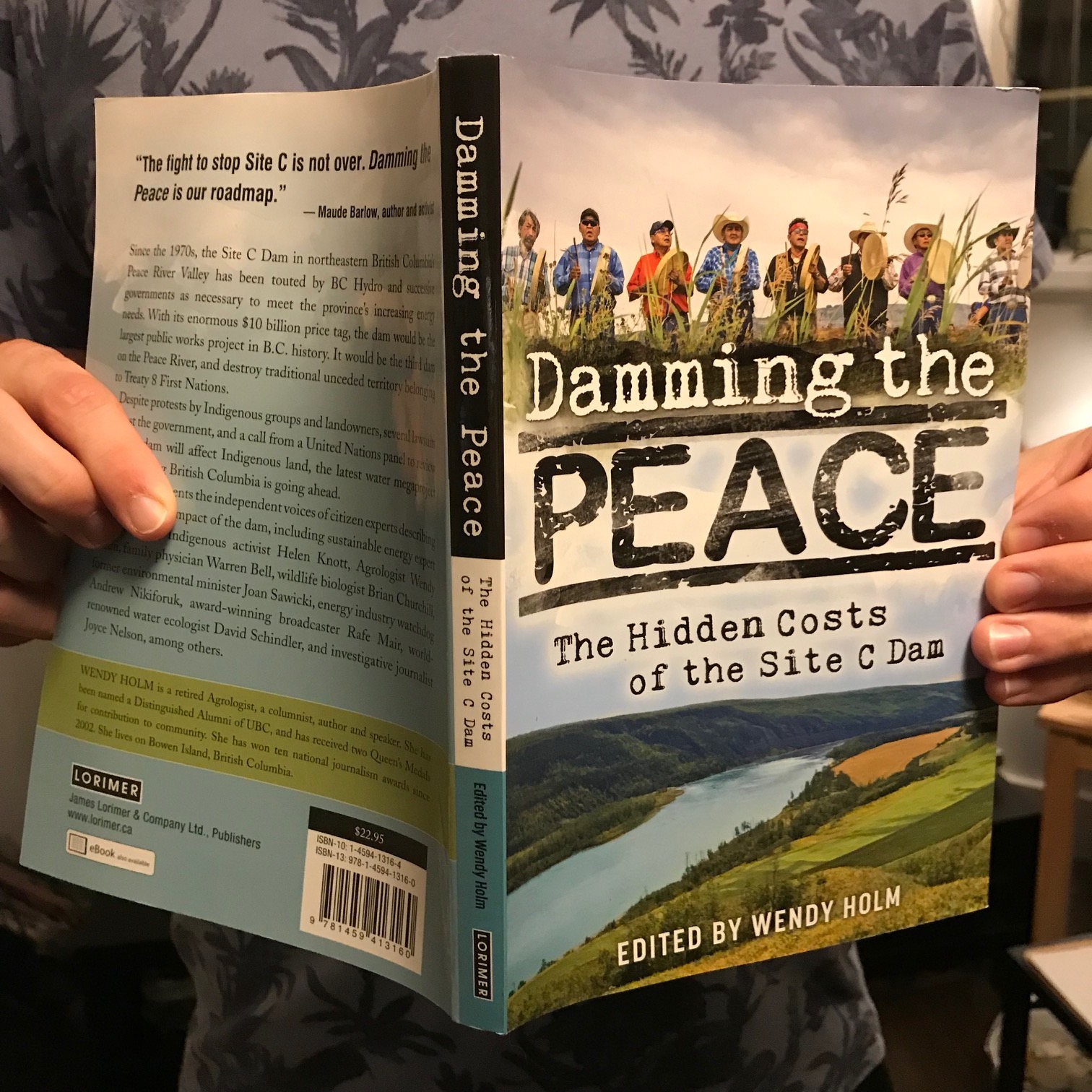With the announcement in December 2017 that B.C. Premier John Horgan intended to proceed with the Site C Dam project in the northeast of the province, disappointed and angry activists realized they had to keep their vigilance focused on the $10.7 billion hydroelectric project.
Horgan said the province had no choice, listing among other things a credit rating downgrade and a 12 per cent rise in BC Hydro over the next 10 years if Site C was cancelled.
Site C has been contentious on environmental grounds and to local First Nations ever since then-Liberal premier Christy Clark approved it in December 2014, and this was before the estimated doubling of its cost over the past four years.
Today, the legal fight over the dam project has not ended. The project has been the subject of intense opposition from some First Nations, area landowners and environmental groups.
In a new book, Damming the Peace: The Hidden Costs of the Site C Dam, 15 journalists and policy professionals pick the project up and peer at it from every direction. It’s a 260-page detailed critique, and was accurately described by activist Maude Barlow as “a road map” or way forward for opponents.
Edited by agrologist Wendy Holm, the book is split into three sections – providing background context for the case, looking at the impacts of the dam, and how Site C and the behaviour of federal and provincial government impacts “big picture” policy concerns.
In her introduction, Holm wrote of the shock she felt as someone who presented expert evidence to the Joint Federal-Provincial Review Panel and the BC Utilities Commission on Site C’s economic, social, and environmental impact after Horgan’s decision to proceed with the dam.
From energy alternatives to Site C, to Indigenous resistance in the face the trauma inflicted on traditional territories, to farmland and food security, to biodiversity, Damming the Peace is a book about potential loss — and about learning and fighting.
Journalists such as Andrew McLeod and Andrew Nikiforuk lend their considerable investigative talents, Nikiforuk in two chapters — the first on earthquakes, dams and fracking, and the second on the downstream impact on the Athabasca Delta.
And former B.C. Environment Minister Joan Sawicki explores how those who followed her in government “overlooked” the importance of the Peace River’s microclimate.
In the poignant final chapter, the late politician and journalist Rafe Mair writes on “Democracy and Civil Disobedience.” It explores the history of fighting back against unjust laws and unscrupulous decisions by the establishment, and links everything from the Tolpuddle Martyrs, to Gandhi, to MLK to Site C and Kinder Morgan.
Mair, who died last October, advocated for a referendum on Site C and added: “The answer, I fear, for both Site C and Kinder Morgan is massive, nonviolent, civil disobedience.”
This book provides an organized and rigorous “how to” guide on the intellectual and fact-based opposition to Site C, and in doing this becomes a great model for a book on any long-term protest. Its ambition is to inform on the subject from every possible angle, keeping the Peace River, the region and its people in mind, rather than the expediency of the business and government angle, which is usually given at least equal weight by the mainstream media.
Where there are currently pickets and protests against projects like Site C and Kinder Morgan (in particular), Damming the Peace offers another stream of criticism, on no less passionate for coming out in “quieter” book form.
Because its message — the folly of the thoughtless, lumbering Site C white elephant that is exposed by science, investigation and on-the-scenes understanding – rings loud and clear.
Damming the Peace is published by James Lorimer & Company Ltd. It costs $22.95.
Photo: Cathryn Atkinson
Like this article? rabble is reader-supported journalism.




